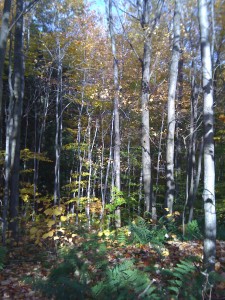Ecology of temperate forests
Vermont’s forests have been shaped by ice, by climate, and by the actions of the state’s human inhabitants. The land on which the forests now grow was shaped by the actions of Pleistocene glaciers, which have left a complex assortment of glacial till, glacial moraines, kame terraces, and lake-bottom sediments in their wake. These different landforms support very different kinds of vegetation: the clay soils of the Champlain Valley, deposited when the valley was occupied by Lake Vermont and, later, the Champlain Sea, support a unique clayplain forest vegetation that is quite distinct from the northern hardwoods forests that dominate the thinner, rockier soils of the slopes of the Green Mountains.
More recently, human activities have been critical in modifying the distribution and structure of Vermont’s forests. In the early 1800s, the land use practices of Vermont’s indigenous inhabitants, members of the Abenaki Nation, gave way to more widespread clearing by European colonists. Much of Vermont’s forested land was cleared by the mid-1800s, but by the early 1900s the clearing trend had reversed itself, and forests returned to all but the best agricultural lands (e.g., the Champlain Valley).
My research in Vermont centers on the ways that human use and natural disturbances interact to control forest dynamics. How has the history of land use in Vermont altered natural disturbance regimes, and what effect have those changes had on forests? How are forests likely to respond to future climate change? What effect are changes in energy policy– an increased reliance on local biomass, for example– likely to have on Vermont’s forests? How can forests be managed to increase the landscape’s ability to take up and store carbon?
Follow the links below to read more about specific research projects:
Disturbance ecology of an old-growth hemlock forest
C sequestration in Vermont’s forests

Leave a Reply
You must be logged in to post a comment.